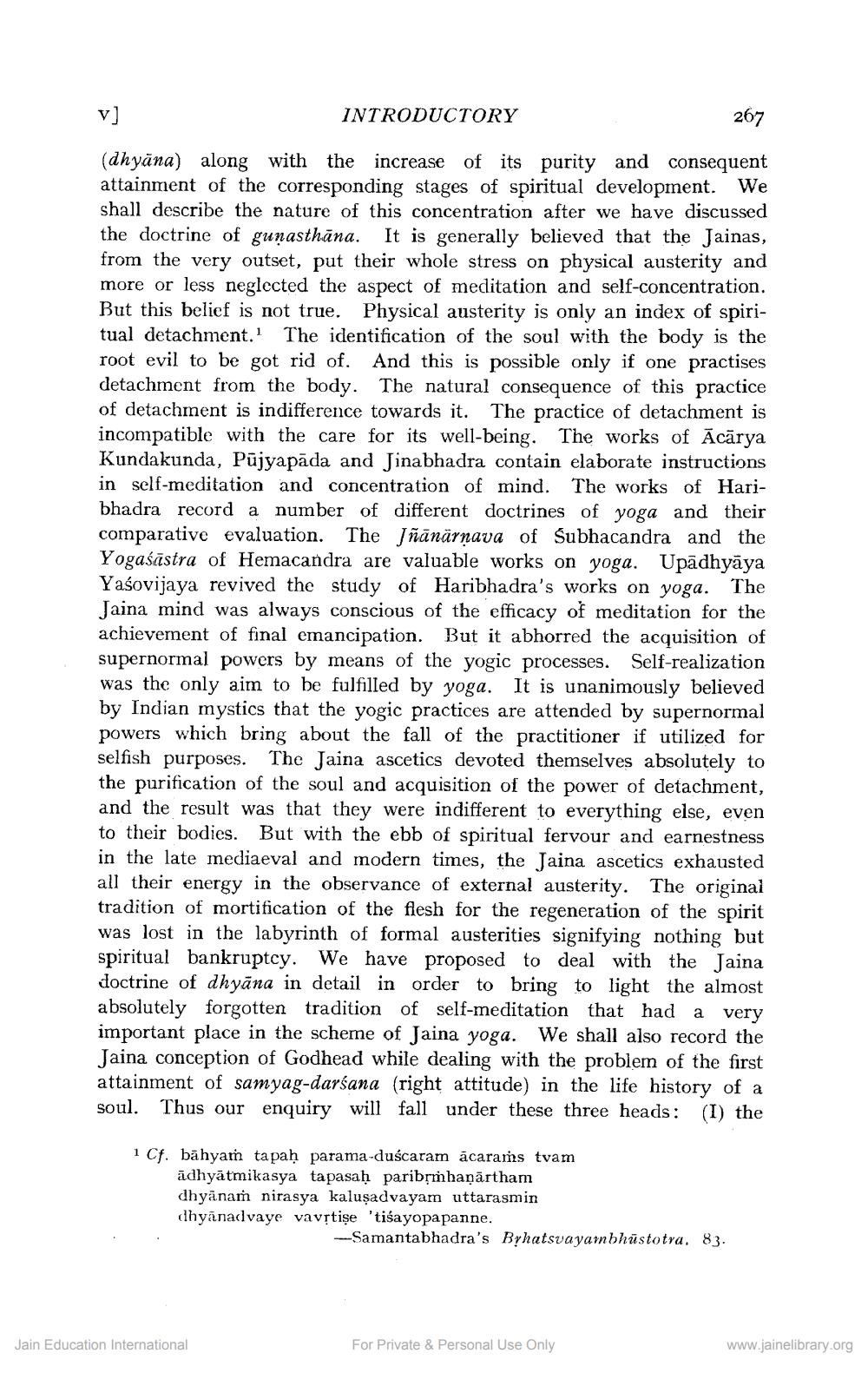________________
v]
INTRODUCTORY
267
(dhyāna) along with the increase of its purity and consequent attainment of the corresponding stages of spiritual development. We shall describe the nature of this concentration after we have discussed the doctrine of gunasthāna. It is generally believed that the Jainas, from the very outset, put their whole stress on physical austerity and more or less neglected the aspect of meditation and self-concentration. But this belief is not true. Physical austerity is only an index of tual detachment.' The identification of the soul with the body is the root evil to be got rid of. And this is possible only if one practises detachment from the body. The natural consequence of this practice of detachment is indifference towards it. The practice of detachment is incompatible with the care for its well-being. The works of Ācārya Kundakunda, Pujyapāda and Jinabhadra contain elaborate instructions in self-meditation and concentration of mind. The works of Haribhadra record a number of different doctrines of yoga and their comparative evaluation. The Jñānārnava of Subhacandra and the Yogaśāstra of Hemacandra are valuable works on yoga. Upadhyāya Yaśovijaya revived the study of Haribhadra's works on yoga. The Jaina mind was always conscious of the efficacy of meditation for the achievement of final emancipation. But it abhorred the acquisition of supernormal powers by means of the yogic processes. Self-realization was the only aim to be fulfilled by yoga. It is unanimously believed by Indian mystics that the yogic practices are attended by supernormal powers which bring about the fall of the practitioner if utilized for selfish purposes. The Jaina ascetics devoted themselves absolutely to the purification of the soul and acquisition of the power of detachment, and the result was that they were indifferent to everything else, even to their bodies. But with the ebb of spiritual fervour and earnestness in the late mediaeval and modern times, the Jaina ascetics exhausted all their energy in the observance of external austerity. The original tradition of mortification of the flesh for the regeneration of the spirit was lost in the labyrinth of formal austerities signifying nothing but spiritual bankruptcy. We have proposed to deal with the Jaina doctrine of dhyāna in detail in order to bring to light the almost absolutely forgotten tradition of self-meditation that had a very important place in the scheme of Jaina yoga. We shall also record the Jaina conception of Godhead while dealing with the problem of the first attainment of samyag-darśana (right attitude) in the life history of a soul. Thus our enquiry will fall under these three heads: (I) the
1 Cf. bāhyamn tapaḥ parama-duścaram ācarams tvam
ādhyātmikasya tapasaḥ paribộmhaņārtham dhyānam nirasya kaluşadvayam uttarasmin dhyānadvaye vavītişe 'tiśayopapanne.
-Samantabhadra's Byhatsvayambhustotra. 83.
Jain Education International
For Private & Personal Use Only
www.jainelibrary.org




